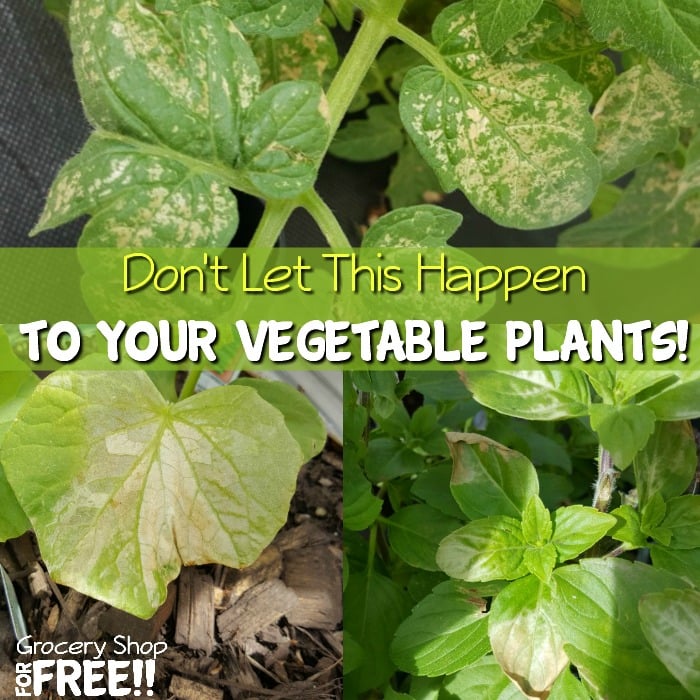Plants need a wide range of nutrients for new growth, root growth, and to be healthy. We hear a lot about N-P-K: nitrogen, phosphorus, and potassium, and how important they are for plant, leaf growth, and soil health.
But, what does it all mean and how do I make sure my plants have what they need to thrive and flourish?
You’ll often also hear about nitrogen deficiency, as well as phosphorus, and potassium deficiency. All of those can seriously impact your plant’s growth. It’s important to learn about the causes and treatments.

But with so many nutrient deficiencies leading to plants being unable to thrive, it’s essential to know the signs of deficiency, such as symptoms of magnesium deficiency as well as others and what the deficiency symptoms mean.
Today, we’ll be talking about gardening tips having to do with magnesium and its role in your plants’ overall health. Let’s get started!
Understanding Magnesium in Plants

Magnesium plays an important role and is one of the essential nutrients in a plant nutrient it plays various roles in plants. Magnesium levels are vital for healthy growth and development.
It serves as a building block for chlorophyll molecule, which is essential for photosynthesis. Plants use magnesium to absorb sunlight when producing food and crop production.
This is why the effects of magnesium deficiency in plants needs to be looked out for.
This mineral also carries phosphorus around a plant’s body and plant tissue and is essential for phosphate metabolism.
Plus, magnesium is also important for plant cells division and protein formation. It activates several enzyme systems while also performing a crucial role in plant respiration.
You might also like: How To Prevent Sunburned Plant Leaves

Magnesium Deficiency In Plants Signs and Symptoms
Like most nutrients, plants get their magnesium source from the soil they’re grown in. However, different soil types, such as acid soils, also have different levels of magnesium availability.
This is affected by the source rock material of the soil, the degree of weathering in an area, the local climate, cropping intensity, rotation, and fertilization practices done in a garden.
Magnesium deficiency or mg deficiency can manifest in plants in a variety of ways. This includes:
- If the upper or lower leaves of your plants look yellow but the leaf veins remain green, you might want to test the soil for a lack of magnesium.
- New plant growth and new leaves will be yellow instead of their green color with dark spots on the leaf edges and leaf tips. This might mean you have plants with magnesium deficiency.
- Purple, red, or brown spots may also appear on leaf margins especially in the oldest leaves and older foliage rather than young leaves.
- When severe cases are left unchecked, a magnesium deficiency can also lead to plant death.
How to Fix Magnesium Deficiency In Plants

Tropical and sandy soils have lower amounts of magnesium, while marshland, peat, saline, and soil with a high clay content tend to have higher amounts of magnesium in them.
Making them an effective method to fight off severe deficiency in plant magnesium deficiency.
If you’re observing magnesium deficiency symptoms in your plants, don’t worry because you can always augment this by adding soil conditioners to your garden that has a magnesium deficiency in soil.
There are top sources of magnesium that can be used to nourish plants and support their well-being and vitality.
These includes:
- Magnesium sulphate or Epsom salts
- Dolomite
- Sulfate of potash magnesia
- Organic compost or organic matter
Don’t forget the benefits of using magnesium fertilizer to enhance plant growth and encourage lush, vibrant foliage.
Remember, however, that you need to conduct a proper soil analysis before you correct magnesium deficiency in your garden and look for signs of magnesium deficiency in plants.
A soil test will allow you to know what exact nutrients your soil lacks as well as its current soil pH level so you can be sure exactly what amendment will work best in your situation.
You can also find gardening products I use in my videos here <---
I now have an Amazon Influencer’s storefront. I put the products I use, in my posts and Youtube Gardening videos, there. Shopping there is free and the site gets a percentage of sales. Thanks!
You can go to my storefront using this secure link <----
If you need seeds, this is the company I use <--- and if you use code: farmer1 at checkout, you'll get 10% off your order!
“The secret of improved plant breeding, apart from scientific knowledge, is love.”
– Luther Burbank




Leave a Reply